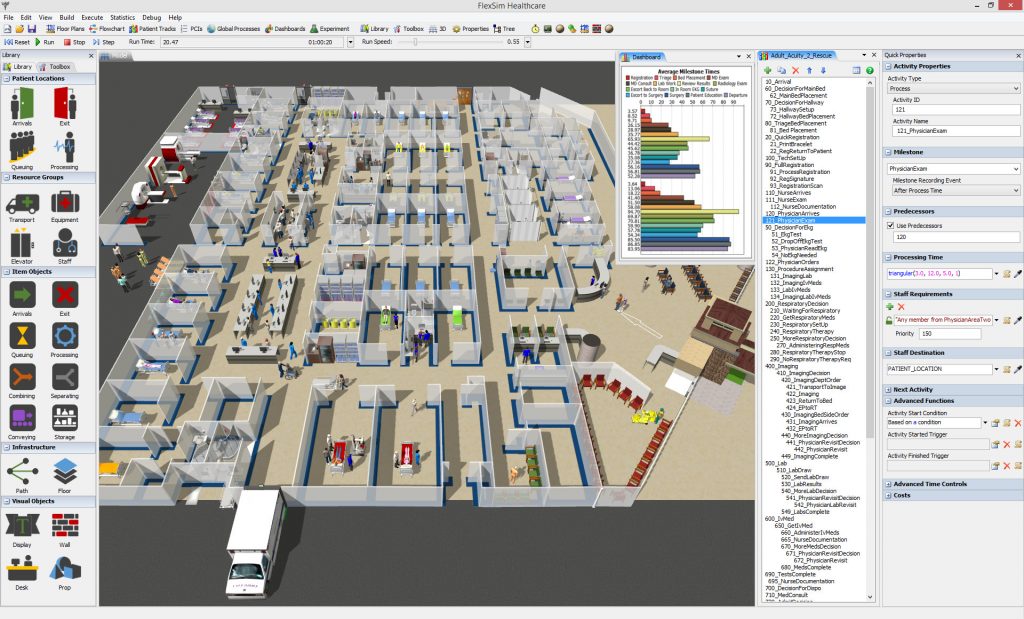Better Decisions in the Emergency Department
How Baptist Health South Florida decreased Door to Provider time by 46%, optimized Staffing, and reduced Length of Stay
Objectives
- Reduce patient Length of Stay (LOS)
- Reduce Door to Provider time
- Optimize staffing hours
Results
- Decreased Door to Provider time lower acuity patients by 8% with Rapid Care Unit (RCU)
- Decreased LOS for lower acuity patients by 27% with RCU
- Decreased Door to Provider time by 46% with Rapid Evaluation (REV)
- Ability to provide optimal staffing levels for nurses and physicians
Would you like a PDF copy of the case study?
Whether you call it gridlock or overcrowding, emergency departments around the country are looking for ways to safely yet efficiently serve a growing number of patients each day. In Miami, Baptist Health South Florida (BHSF) investigated the impact of rising emergency department (ED) visits at one of their hospitals by building an accurate computer model of the ED. The model, created using FlexSim HC, allowed them to test three important “what if” scenarios and see the impact of potential changes.
Faster care for lower acuity patients
What would happen if lower acuity patients were cared for in a separate unit? The Rapid Care Unit (RCU) at BHSF’s hospital was designed for just that. This segregated unit has a streamlined process, enabling a physician-led team to help more patients without sacrificing care quality—and free up bed space elsewhere for more severe patients. That’s the theory, anyway. The only way to really be confident is to test how well the unit works within the entire department. BHSF plugged the RCU scenario into their model to test it against actual data and real-world variability. The results showed that lower acuity patients seen in the RCU would see an 8% decrease in Door to Provider time and a 27% reduction in Length of Stay.
A better way to triage

What would happen if a physician participated in triage? It seems like an obvious success, but this change can sometimes slow down the triage process or lead to staffing issues. Under a proposed Rapid Evaluation (REV) at the hospital, a physician would evaluate a patient early on and get their orders started. BHSF tested this scenario in their model, which showed a 46% decrease in Door to Provider time. They also discovered that the back end of the process took a slight hit without adding additional resources—avoiding disappointing side-effects later on.
Smarter staffing decisions
What’s the best staffing plan? It’s the golden question everyone would like answered. BHSF used their model to solve this problem. First, they gathered data from the ED census and nurse-to-patient ratio to come up with optimal staffing levels each hour. They plugged this information into the model and used FlexSim HC’s visual dashboard to continually validate the impact on critical patient care metrics. BHSF was even able to evaluate and present multiple staffing scenarios to cover a variety of budget constraints.
The ED has aimed at improving Door to Provider time in particular, so REV and its 46% decrease in this key metric is a big win for the department. As a result of their study, BHSF implemented RCU on a permanent basis, is in the process of implementing REV, and successfully added staff to the ED.